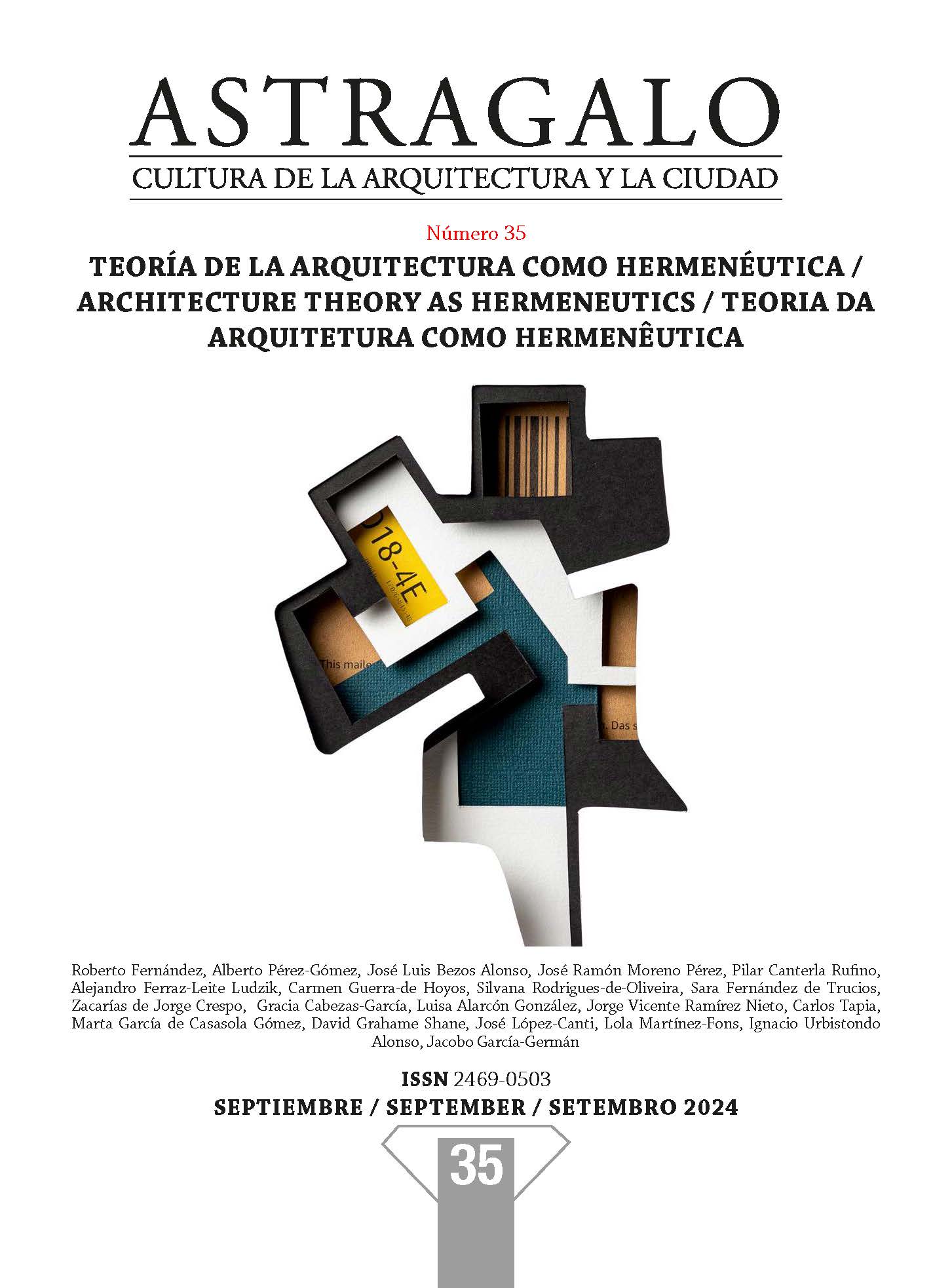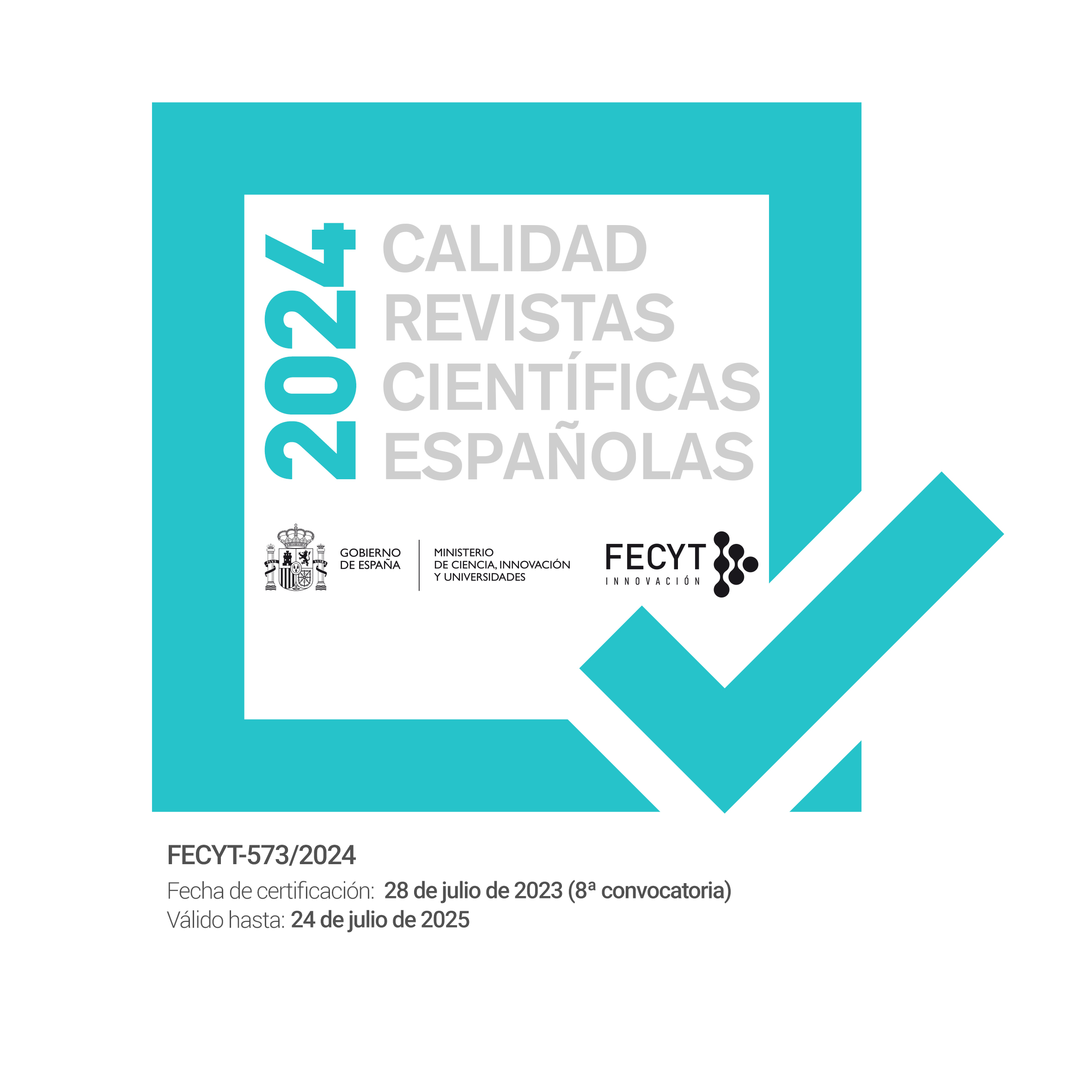La posibilidad de un discurso narrativo para una Teoría de la arquitectura como hermenéutica.
DOI:
https://doi.org/10.12795/astragalo.2024.i35.04Palabras clave:
arquitectura, hermenéutica, narrativas, intersticios, contemporáneoResumen
En un contexto donde teoría, hermenéutica y arquitectura se entretejen, emerge una visión crítica sobre el habitar humano y la producción arquitectónica contemporánea. Este texto reflexiona sobre cómo la arquitectura y la literatura han desrealizado el mundo, creando narrativas y espacios que desafían lo establecido. A través de la obra de Tafuri, se explora la relación entre arquitectura y modos de vida, donde la creación arquitectónica se convierte en un dispositivo para sistematizar comportamientos humanos según los intereses del capital. Esta intermediación arquitectónica, marcada por la polaridad entre diversidad y unificación, plantea una aporía sobre cómo integrar lo múltiple en un todo cohesionado. La arquitectura contemporánea, al haber trascendido su función de representación cultural, se enfrenta ahora a la tarea de crear espacios de compensación, simulacros que evocan atmósferas sensoriales y nostálgicas. En este sentido, la metáfora del ojo frente a la hoja sugiere un cambio de perspectiva: de la percepción visual dominante a una inmersión sensorial que refleja la complejidad del medio contemporáneo. Así, la arquitectura no solo configura espacios, sino que participa en la redefinición de la habitabilidad en un mundo en constante cambio. En la obra de arquitectos como Siza, se percibe un intento de reconciliar pasado y presente, ofreciendo refugios que permiten una experiencia de habitar distinta. Finalmente, se plantea que la arquitectura debe adaptarse a una comprensión más amplia del medio, promoviendo una coexistencia permeable y dialógica que responda a las múltiples dimensiones de la existencia contemporánea.
Descargas
Citas
Agamben, Giorgio. 2019. Sobre el tiempo que viene. Buenos Aires: Adriana Hidalgo Editora.
Castro Nogueira, Luis. 2008. Habitanzas. Málaga: Editorial Aljibe, 157.
Cacciari, Massimo. 1994. El fin de la modernidad. Nihilismo y hermenéutica en la cultura posmoderna. Madrid: Editorial Tecnos.
Handke, Peter. 1992. Ensayo sobre el cansancio. Traducido por Miguel Sáenz. Barcelona: Alianza Editorial.
Moreno Pérez, José Ramón. 2020. Adentrándose en la sombra: hay una arquitectura... Prólogo por Félix de la Iglesia Salgado. Madrid: Recolectores Urbanos Editorial.
Nicolin, Pier Luigi. "La Mimesi: La regola del gioco." Domus, no. 726 (1991): 34-38.
Vittorio Gregotti, Dentro de la Arquitectura, traducción de Ana Maria Llauradó (Barcelona: Gustavo Gili, 1996)
Safranski, Rüdiger. 2003. "Prólogo." En Esferas I: Burbujas. Microsferología de Peter Sloterdijk, 13-16. Madrid: Siruela.
Siza, Álvaro. 1991. "Proyecto del Museo de Santiago." El Croquis, no. 49: 9-10
Siza, Álvaro. 1998. Imaginar la evidencia. Barcelona: Editorial Gustavo Gili.
Sloterdijk, Peter. 2006. Esferas III: Espumas. Esferología plural. Traducción de Isidoro Reguera Pérez. Biblioteca de Ensayo: Serie mayor, vol. 48. Madrid: Siruela.
Sloterdijk, Peter. 2007. En el mundo interior del capital. Traducido por Miguel Sáenz. Madrid: Siruela.
Sloterdijk, Peter. 2019. El imperativo estético. Traducido por Isidoro Reguera. Madrid: Siruela.
Descargas
Publicado
Cómo citar
Número
Sección
Licencia
Derechos de autor 2024 José Ramón Moreno Pérez

Esta obra está bajo una licencia internacional Creative Commons Atribución-NoComercial-CompartirIgual 4.0.


















